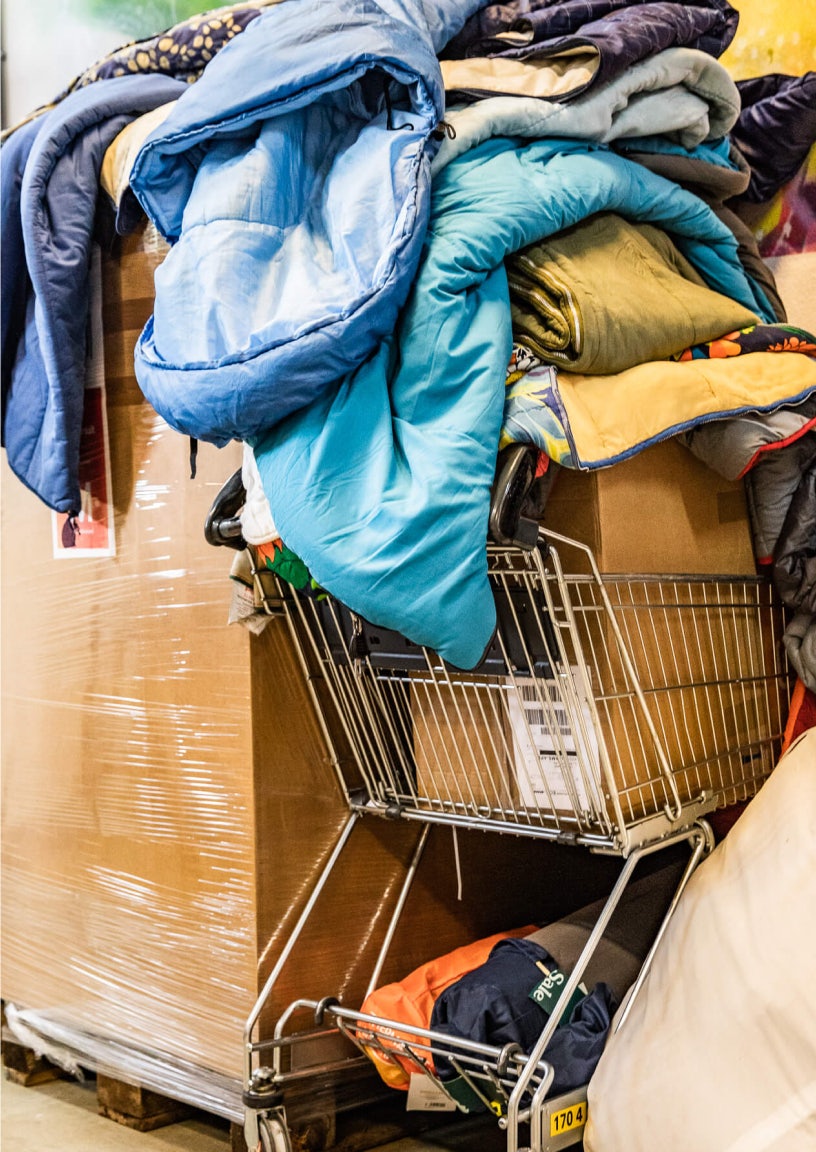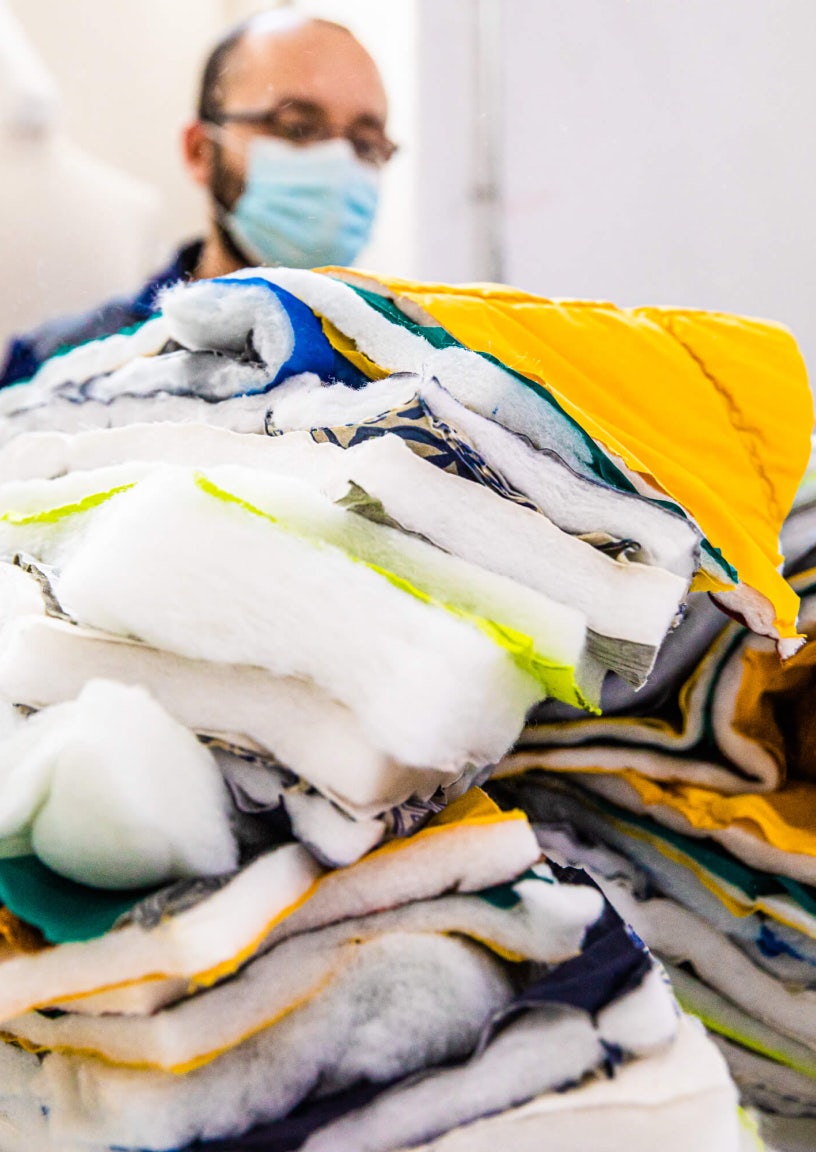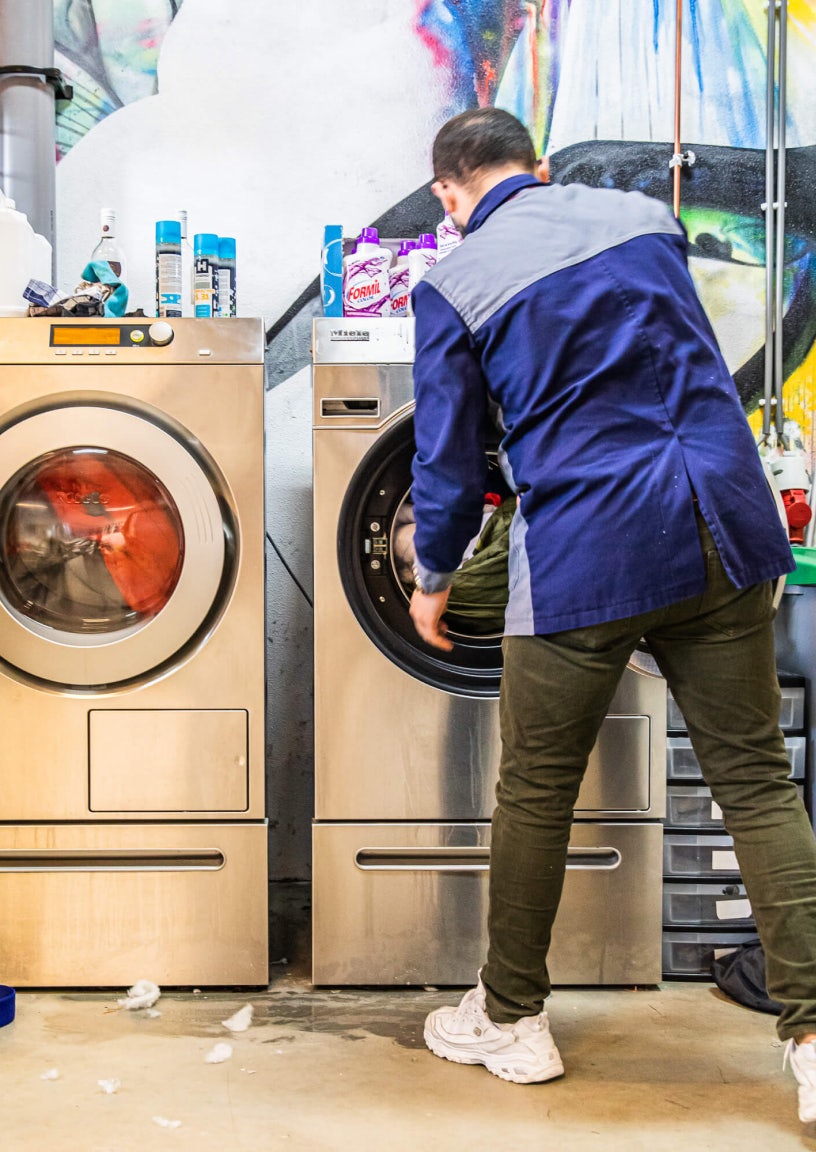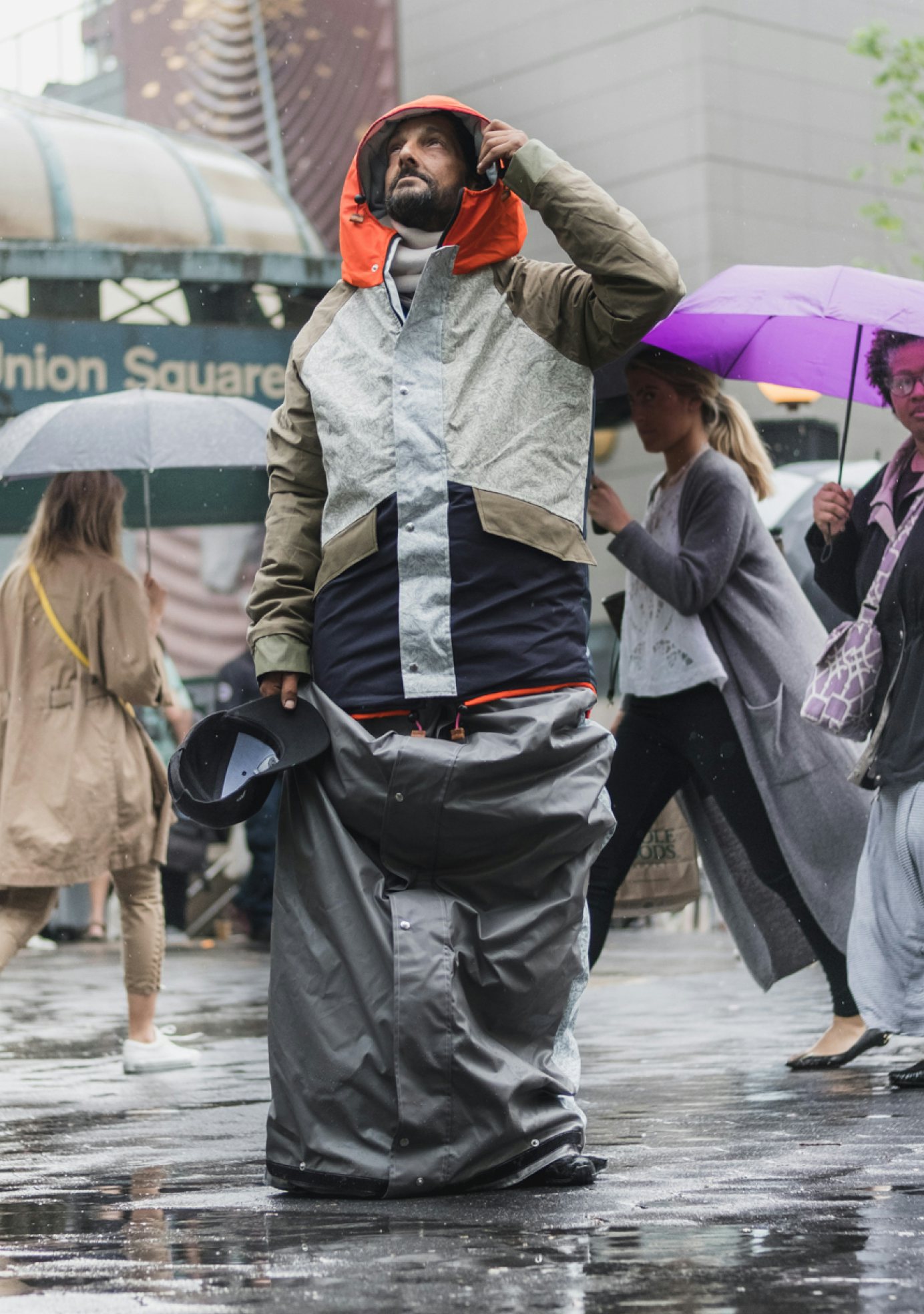
People helping people
How Secrid helps Sheltersuit Foundation spread the story of homelessness.
“I'll just turn off my video, otherwise I can’t drive properly.” Bas Timmer is on the road, as usual. “My van is loaded up with sleeping bags.” Just another day at the office for the founder of Sheltersuit Foundation. His foundation distributes portable tents and sleeping bags to people who are forced to sleep on the streets. The homeless, refugees, disaster victims. All around the world: from Rotterdam to Portland.
The social entrepreneur speaks passionately and with an infectious optimism and an Eastern-Dutch accent. “Everything that provides us with comfort in our home, people living outside deserve to experience as well. And that starts with the most basic thing: warmth.” And so, he offers a solution to an acute problem that is taking place visibly and invisibly right in front of us. “The most important thing is that we realize there is a problem. There’s no point in only talking about long-term solutions if in the meantime people are freezing to death on the streets. Looking away is something that bothers me.”
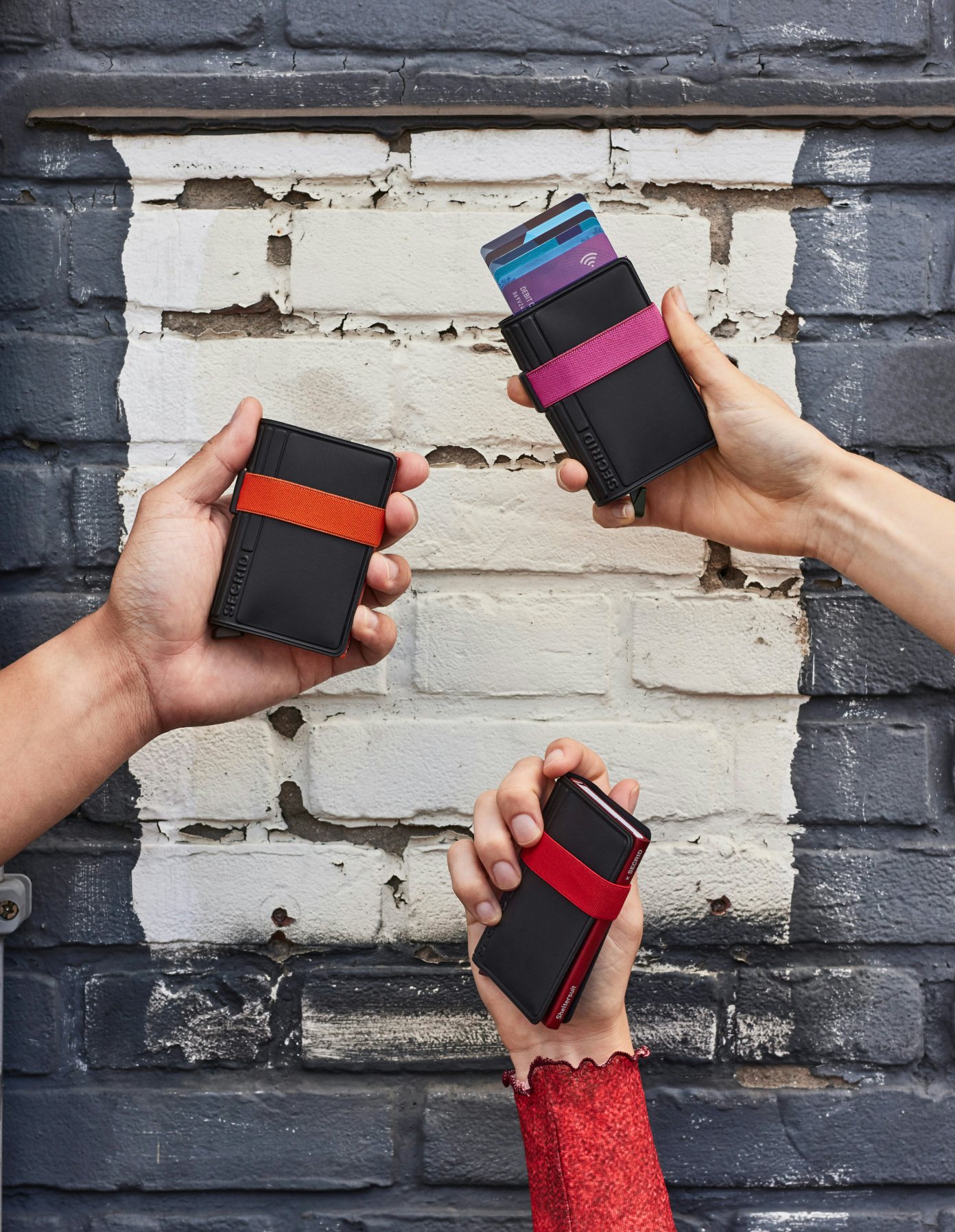
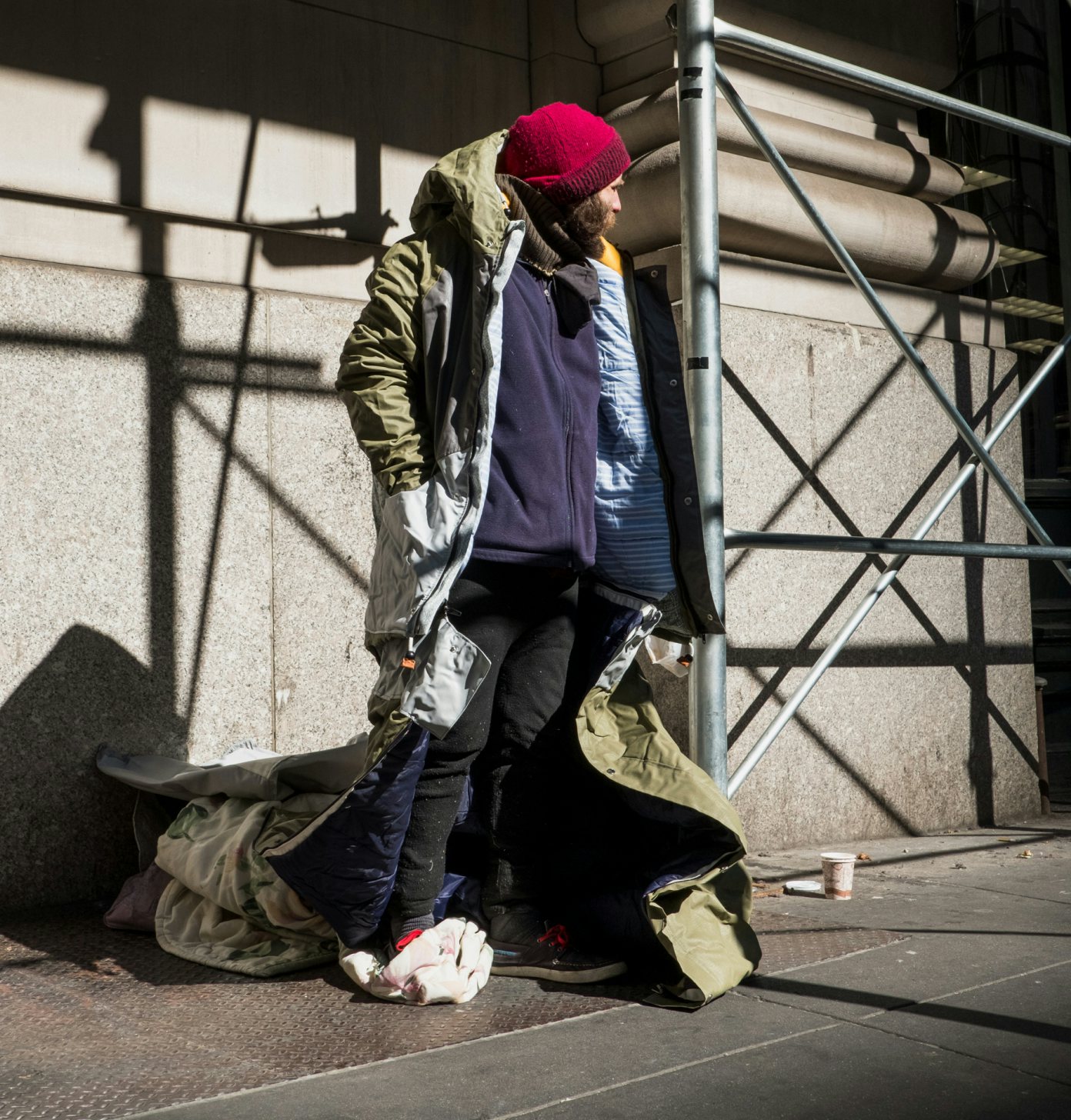
When did you open your eyes to this problem?
“Quite early on, as a teenager. I would get upset about people who just walk by the homeless. As if they don't exist.” Bas grew up ‘among the rolls of fabric', his parents owned a textile company. The step to the fashion academy was a logical one. He had a talent for the profession, but it didn’t fully sit right with him: “It felt superficial. Just making beautiful things, was that all there was?” He started a clothing brand and produced a warm jumper with scarf attached for the homeless. “My mother was skeptical, who wants to walk around in a jumper that homeless people also wear, she said. She didn’t understand it." And when your mother says something, you listen, so Bas did. He did not go through with his plans. “A few years later, a friend's father died on the street, as a result of hypothermia. That’s when I knew: shit, I should have followed my instincts.” That was the seed that grew into Sheltersuit Foundation. It has now evolved into a foundation with branches in Enschede, London, New York and Cape Town that provided work for more than 130 people who otherwise would struggle to enter the labour market.
Design ‘as a force for good’
As a foundation, he is completely dependent on donations, both material (fabric) and financial. Raising awareness of the homelessness problem plays a significant role in that regard, in order to open people's eyes. And they rely on the willingness of companies to lend a helping hand. Fortunately, that does happen. Many outdoor brands donate hardshell residual fabrics which Sheltersuit Foundation turns into sleeping bags.
Secrid has also been a donor for a number of years, financed through the company's Impact Fund. “We take 1% of our turnover annually to support designers committed to positive change in the industry”, says Marianne van Sasse van Ysselt, co-founder of Secrid. “We call that ‘design as a force for good’ using design to create sustainable and social products that are truly needed.”
“Donating is easy, but as designers we were looking for the right partner to make real impact. Doing good with money alone doesn’t really suit us. After all, we are designers who make impact on a large scale with our company because we work in a socially and ethically responsible way. So, we asked ourselves the question: how can we as designers support another mission-driven designer?”
And then Sheltersuit Foundation crossed your path. How did that happen?
“René (co-founder and partner) and I saw Bas speak at the Indaba design festival in Cape Town. His story was passionate, so convincing. He said he was looking for funding. René and I caught each other’s eye and knew straight away: we wanted to help. We went to talk to him during the break. With our first donation they were able to start the production of Sheltersuits in South Africa.”
The two parties clicked and quickly found common ground. “Bas and Marianne are both designers, so we speak the same language. We both believe that as a designer you have a responsibility.” Bas nods and adds in his own unique way: “As a designer, I want to solve problems, not create more shit. Everyone has quite enough.” Marianne agrees.
Design as a force for good
You share the same philosophy.
Marianne: “Exactly. We want to show that things can be done differently. You don't just make an impact at the front, but also at the back.”
What does that mean?
At Secrid, the production chain is centred around sustainable and social values from start to finish. “In the Netherlands we have 150 employees who would otherwise struggle to enter the labour market working on our wallets. Since our inception we have consciously opted to produce locally. That is not the easiest or cheapest way, but it is the most sustainable.”
This philosophy is shared by Sheltersuit Foundation: “Our strength is no longer the product, but the model behind it,” Bas explains. “For example, many former refugees from Syria and Eritrea work in our studio. In addition, we work with recycled materials where possible. The fashion industry is extremely wasteful. We are happy to accept residual textiles and give them a second life.”
Is this way of working as obvious to you as it sounds now?
Bass resolutely: “100%.” Marianne agrees. “Absolutely. If the bigger picture doesn’t make sense to me, I won’t get involved.”
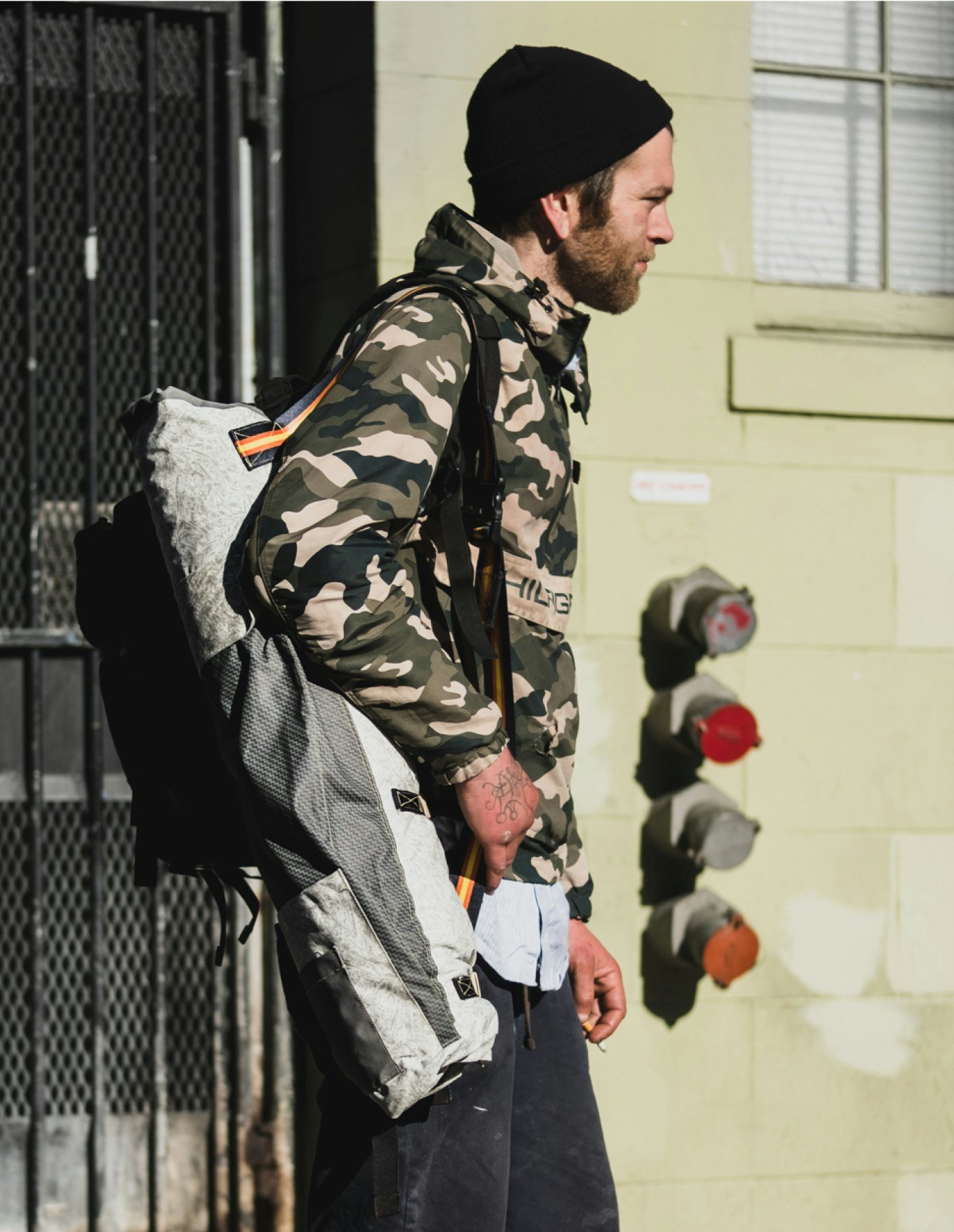
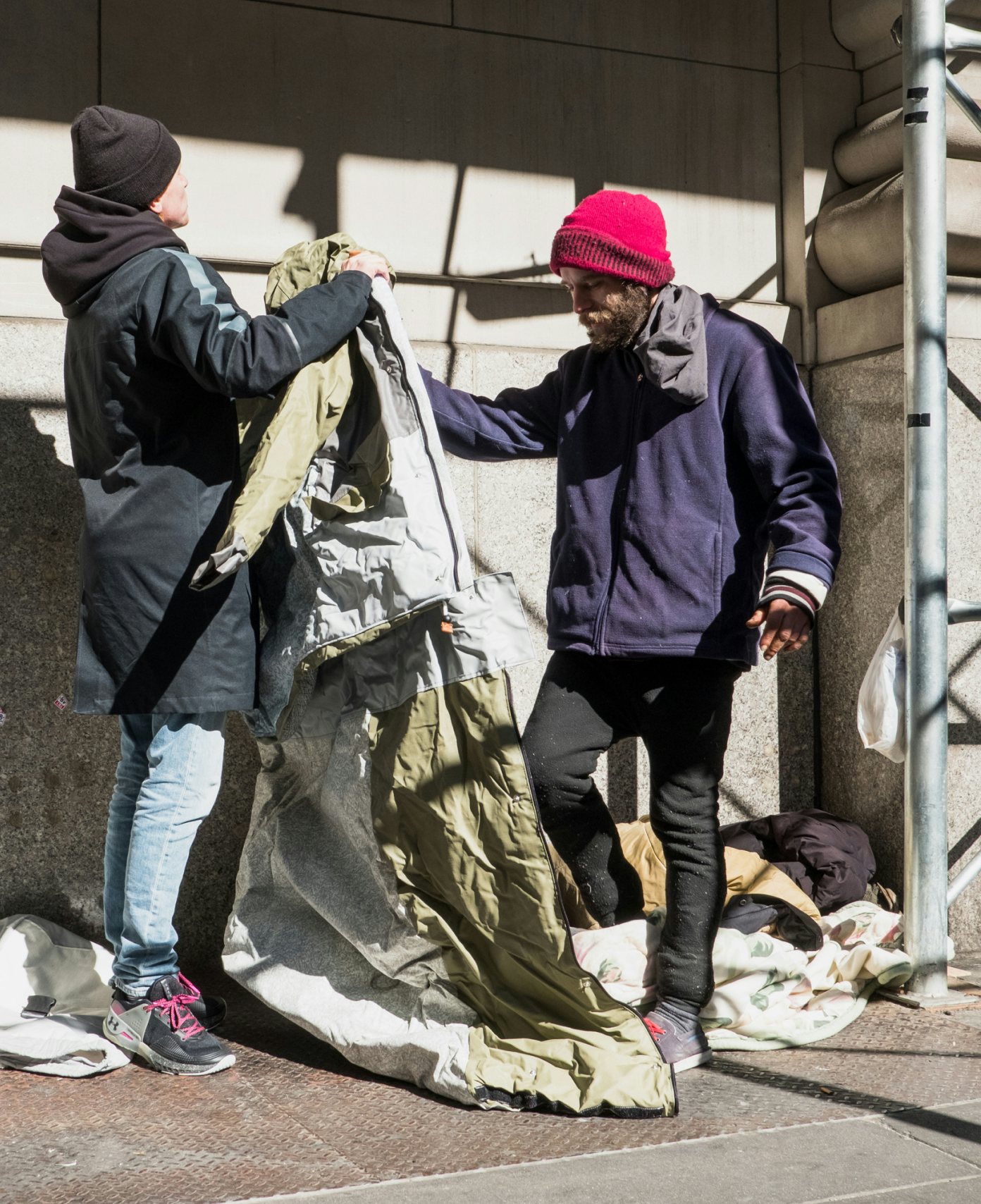
So, you have a lot in common. How does Secrid give Sheltersuit Foundation a platform?
“We were already donors to the foundation,” Marianne explains, “but we were looking for a way to involve the consumer in the message. This is how we came up with the idea to make the wallet the bearer of the message. We designed a limited-edition Secrid wallet, made from deadstock.”
Dead stock?
“Materials that have been rejected for various reasons, for example Card Protectors with scratches on the surface. The limited-edition wallet is engraved with the words 'People Helping People'. Ten euros from every wallet sold goes to Sheltersuit Foundation.” In this way, Secrid is helping to spread the Sheltersuit message around the world, especially in countries where there is a lot of homelessness. “This way of supporting makes what we do much more visible,” Marianne continues. “And above all: why we do it.”
How does it become visible?
“You always have your wallet with you. It makes you consider: what do I spend my money on? And it acts as a conversation starter.” Most importantly, this wallet will help spread the Sheltersuit Foundation message, raising awareness around the issue of homelessness and sparking conversation around this topic.”
And that conversation is needed, according to Bas, not only with each other but also with the homeless. “I host workshops for companies like Nike and the Design Academy and one of the first things I do is take them out to the streets. Have a conversation. 1 in 3 comes back with tears in their eyes when they see how fucked up life is for people who are homeless. If you want to make a difference you have to immerse yourself and be vulnerable. When I visit the homeless, I feel at home.”
That sounds contradictory, almost ironic.
“I know, but it’s true. The street can be beautiful and moving. The way people help each other, feed each other. There is no judgment towards the other. They see each other as equal. The street has a community where people are often kinder to each other than we are used to at home. You become a different person on the street.”
If I were a homeless person, what would I want someone else to do?
"Attention. That might be even more important than money. Many homeless people are lonely. A chat, or sometimes even a smile can make a real difference. And of course, you can make them happy with a little change, if that’s possible.”
People have less and less change in their pockets. That seems like a big problem to me.
“It certainly is. There must be a way for the contactless world to help the homeless. Perhaps by scanning a QR code on Sheltersuit garments made with Secrid textiles. To create trust. I need to spend an afternoon with the designers at Secrid thinking about this.”
Marianne, laughing: “I think it's a good idea, you’re welcome any time.”
